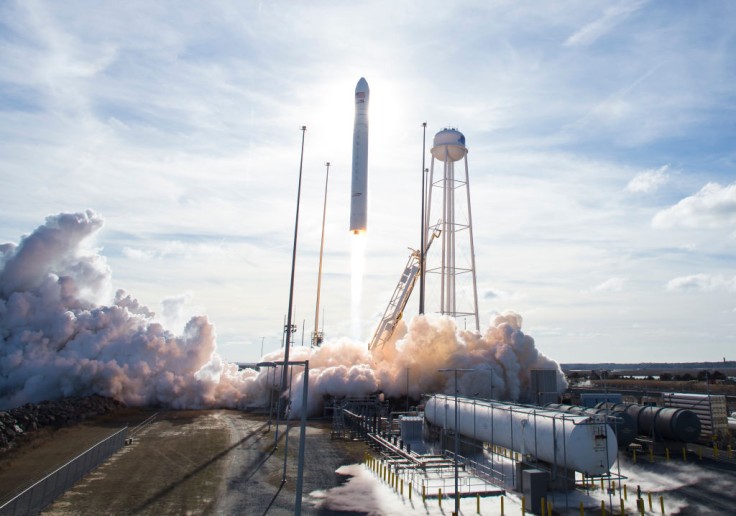
Expect the International Space Station to host a pizza party of seven soon. The latest space station delivery brought 8,200 pounds or 3,700 kilograms of shipment which contained food and science investigation equipment.
Find out more about the latest resupply mission.
Northrop Grumman Cygnus Cargo Ship Mission
Northrop Grumman successfully executed its 16th supply run for NASA. It is its biggest load yet with 8,200 pounds of cargo.
The Cygnus cargo ship launched from Pad-0A at NASA's Wallops Flight Facility in Virginia last Tuesday, August 10. The Cygnus cargo was launched on an Antares 230+ rocket.
To power Cygnus on its journey, it was fitted with solar arrays that were deployed to collect sunlight.
.@NorthropGrumman’s #Cygnus cargo craft reached the station on Thursday for a robotic capture with the @CSA_ASC #Canadarm2 commanded by @Astro_Megan. pic.twitter.com/LG4vwSZ992
— International Space Station (@Space_Station) August 14, 2021
The cargo ship successfully attached to the International Space Station on Thursday, August 12. Cygnus was captured by the space station's robotic Canadarm2 commanded by NASA Astronaut Megan McArthur.
Thomas Pesquet, the European Space Agency astronaut, was in charge of monitoring telemetry during rendezvous, capture, and installation on the Earth-facing port of the Unity module, NASA explained.
Cygnus will remain at the space station until November and it is set to dispose of several thousand pounds of trash through its destructive re-entry into the Earth's atmosphere.
On behalf of the crew, @Astro_Megan welcomes the Cygnus spacecraft, named the SS Ellison Onizuka, to the @Space_Station. Next up is the installation of Cygnus to the Earth-facing port of the station's Unity module, with live coverage beginning at 8:00am ET (12:00 UT): pic.twitter.com/IyOlRcQmkh
— NASA (@NASA) August 12, 2021
NASA Pizza Delivery for the ISS
The 8,200 pounds of cargo that made it to the ISS were science and research equipment and investigations, crew supplies, and vehicle hardware.
Included in the crew supplies were fresh apples, tomatoes and kiwi. The cargo also came with a pizza kit and cheese smorgasbord for the seven crew members to enjoy, NBC reported.
Success! It's pizza party time for the seven residents on board the @Space_Station 🍕 (For real, this shipment included a pizza kit.) #ISS @NASA https://t.co/r0W4H6D7f2
— Katherine Page (@KPageTV) August 12, 2021
A new mounting bracket was also delivered. In a scheduled spacewalk this August, the astronauts in the ISS will attach them to the port side of the station's backbone truss. The said mounting bracket will be the structure that enables the installation of a new pair of solar arrays to be delivered at a later date.
The space station also received some more scientific investigations, like the Redwire Regolith Print study which demonstrated 3D printing on the space station using a material simulating regolith or the loose rock and soil found on the surfaces of planetary bodies such as the Moon and Mars. Being able to construct habitats and other structures using resources already found on the planetary bodies can significantly reduce launch mass and cost, NASA pointed out. The results of this study could help determine whether it is possible to use regolith as a raw material, as well as 3D printing as a construction technique.
A genome editing experiment on the station studies how the body repairs space-caused DNA damage and expands biology research. https://t.co/AQn0mRmtBu
— International Space Station (@Space_Station) August 13, 2021
The National Science Foundation also collaborated with the ISS U.S. National Laboratory to study whether an engineered tissue platform in microgravity forms the characteristic muscle tubes found in muscle tissue. This is brought about by the need to identify drugs to treat the condition called sarcopenia which is the gradual loss of muscle mass. The platform could provide a way to rapidly assess potential drugs prior to clinical trials.
These scientific investigations, along with the hundreds of other investigations conducted in the ISS, are being studied in the station's orbiting laboratory that focuses on areas of biology and biotechnology, physical sciences and Earth and space sciences.
Not only are these advances in science going to help the people back on Earth, but these studies will help keep astronauts healthy during long-duration space travel. These missions and studies also demonstrate to the tandem of humans and robots for future Moon and Mars explorations like NASA's Artemis program.









